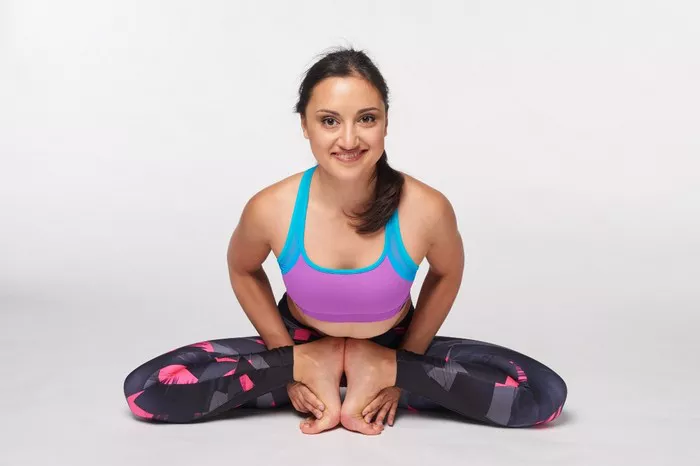Pregnancy is a beautiful journey that brings about significant changes in a woman’s body. As the body evolves to accommodate the growing baby, maintaining physical fitness becomes crucial. Yoga, with its gentle yet effective poses, offers expecting mothers a way to stay healthy and alleviate some of the discomforts associated with pregnancy. At the six-month mark, certain yoga poses can provide specific benefits tailored to the needs of pregnant women. In this article, we’ll explore six yoga poses suitable for mothers in their sixth month of pregnancy.
1. Cat-Cow Pose (Marjaryasana-Bitilasana):
Cat-Cow pose is a gentle, flowing movement that helps in relieving tension in the back and improving spinal flexibility. To perform this pose, start on your hands and knees, with your wrists directly under your shoulders and your knees under your hips. As you inhale, arch your back, lifting your tailbone and head towards the ceiling, creating a concave shape in your spine (Cow Pose). As you exhale, round your spine towards the ceiling, tucking your chin to your chest (Cat Pose). Repeat this movement slowly, syncing your breath with each motion.
Cat-Cow pose helps alleviate back pain, a common discomfort during pregnancy. It also helps in gently strengthening the core muscles and promoting better posture, which is essential as the belly grows heavier.
2. Supported Warrior II (Virabhadrasana II):
Warrior II pose, when modified with props for support, can be a beneficial addition to a prenatal yoga practice. To perform Supported Warrior II, stand with your feet wide apart, with one foot facing forward and the other foot turned slightly inward. Bend your front knee, ensuring it aligns with your ankle, while keeping your back leg straight. Extend your arms out to the sides, parallel to the floor, with your palms facing down.
Using a chair or wall for support, rest your front forearm on the surface while maintaining the posture. This modification reduces strain on the legs and pelvic area while still providing the benefits of opening the hips and strengthening the legs.
Supported Warrior II helps in improving balance and stability, which can be challenged during pregnancy due to changes in the body’s center of gravity. It also stretches the hips and groin muscles, providing relief from discomfort caused by the increased pressure on these areas.
3. Goddess Pose (Utkata Konasana):
Goddess pose is a powerful stance that strengthens the lower body and opens up the hips. To practice this pose, start by standing with your feet wider than hip-width apart, toes pointing slightly outward. Bend your knees, sinking your hips down towards the ground, while keeping your spine tall. Bring your palms together at your heart center, pressing the elbows against the inner thighs.
In Goddess pose, the deep squatting position helps in preparing the pelvic floor muscles for labor and delivery. It also strengthens the thighs and glutes, providing support to the lower body as it carries the additional weight of pregnancy.
4. Supported Bridge Pose (Setu Bandhasana):
Bridge pose is an excellent way to stretch the spine and open up the chest and shoulders. During pregnancy, practicing Supported Bridge pose with the help of props offers additional comfort and support. To perform this pose, lie on your back with your knees bent and feet hip-width apart. Place a bolster or folded blanket under your sacrum for support.
Gently lift your hips towards the ceiling, pressing into your feet and engaging your glutes. Keep your shoulders relaxed and your chin slightly tucked towards your chest. Hold the pose for a few breaths, focusing on opening up the chest and releasing tension in the lower back.
Supported Bridge pose helps in relieving back pain and fatigue by gently stretching the spine and chest muscles. It also encourages blood circulation to the pelvic region, promoting overall relaxation and well-being.
5. Legs-Up-the-Wall Pose (Viparita Karani):
Legs-Up-the-Wall pose is a restorative inversion that helps in reducing swelling in the legs and feet, a common occurrence during pregnancy. To practice this pose, sit sideways next to a wall with your hip touching it. Lie down on your back and swing your legs up against the wall, keeping your buttocks as close to the wall as comfortable.
Relax your arms by your sides, palms facing up, and close your eyes. Allow the weight of your legs to sink into the support of the wall, feeling a gentle stretch in the hamstrings and lower back. Stay in this pose for 5-10 minutes, focusing on deep, diaphragmatic breathing.
Legs-Up-the-Wall pose promotes relaxation and reduces swelling by encouraging venous return from the lower body. It also relieves pressure on the lower back and pelvis, providing much-needed relief from discomfort associated with the later stages of pregnancy.
6. Child’s Pose (Balasana):
Child’s Pose is a deeply restorative posture that promotes relaxation and stress relief. To practice this pose, kneel on the mat with your big toes touching and knees slightly apart. Sit back on your heels and fold forward, extending your arms out in front of you and resting your forehead on the mat.
Allow your spine to lengthen as you breathe deeply into your lower back, hips, and shoulders. Surrender to gravity, letting go of any tension or tightness in the body. Stay in Child’s Pose for as long as comfortable, focusing on relaxation and surrender.
Child’s Pose provides a gentle stretch to the hips, thighs, and ankles while promoting a sense of calm and inner peace. It can be particularly beneficial during the later stages of pregnancy when rest and relaxation are essential for both the mother and baby.
Conclusion
Incorporating these yoga poses into a prenatal practice can help expecting mothers stay physically and mentally healthy throughout their pregnancy journey. However, it’s essential to consult with a healthcare provider before starting any new exercise regimen, especially during pregnancy. With proper guidance and modifications, yoga can be a safe and effective way to support the well-being of both the mother and her growing baby.

























